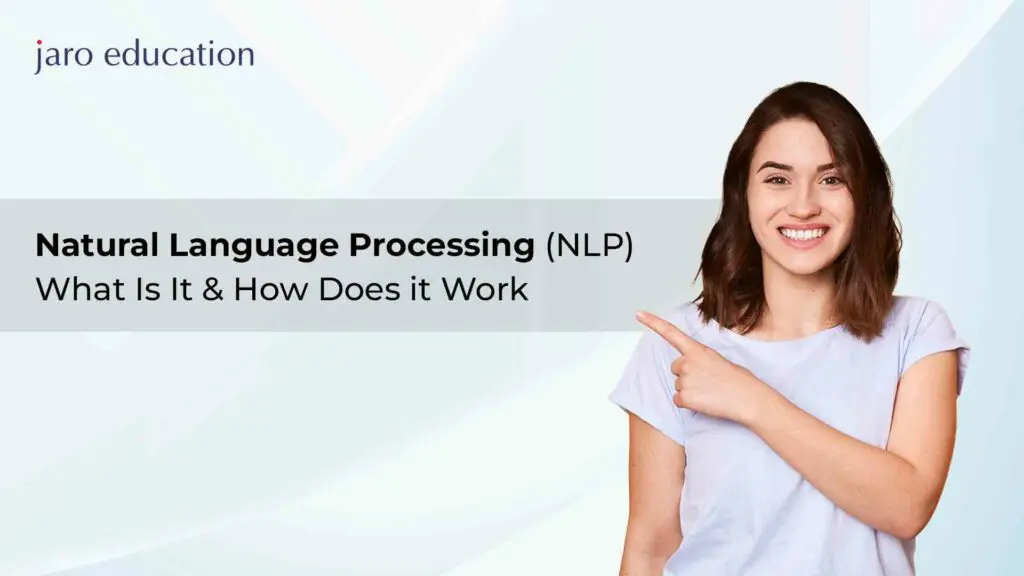Learning a language is not just about grammar and vocabulary but also about understanding tone, context, and complex interactions. Businesses deal with loads of written and spoken data every day, like emails, tweets, and transcripts. This data doesn’t fit neatly into tables or columns. That’s where Natural Language Processing (NLP) comes in.
It is a field of computational linguistics and artificial intelligence that helps us go beyond simple keyword analysis and understand the real meaning behind words. NLP allows computers to scale and handle large amounts of language data in a meaningful manner.
To comprehend the principles behind NLP, the methods that are employed, and gain traction in your career, the Rotman School of Management (UofT), in partnership with IIT Jammu, offers an Advanced Data Science Certificate Program. Participants who successfully complete this programme acquire a solid foundation in NLP besides expertise in the larger field of data science.
Understanding NLP (Natural Language Processing)
NLP, or natural language processing, is a branch of artificial intelligence (AI) that focuses on teaching computers to read, comprehend, and make sense of human language.
As a result, it makes it possible for computers to carry out operations like sentiment analysis, machine translation, and spell-checking. Computers can use NLP to apply linguistic rules to speech or text, improving their comprehension and processing of human communication.
This capability opens doors to various automated business processes, such as automatic translations and speech recognition. These advancements in NLP greatly contribute to streamlining and automating various business operations.
How Does NLP Function?
Various strategies are used by NLP to modify the language and extract useful information. When beginning with NLP, it is essential to comprehend the basic principles of language processing.
NLP heavily incorporates linguistics, and language processing involves four main steps:
-
Morphology:
This step involves the study of the structure of words and how they relate to one another.
-
Syntax:
Analysing the way words are put together to create grammatically sound sentences is known as syntax.
-
Semantics:
This phase investigates the meaning of words, which is derived from both lexical meaning and grammatical structure.
-
Pragmatics:
Taking into account elements like social cues and cultural references, pragmatics explores the meaning of words in context.
Each of these steps enhances the contextual understanding of words. Let’s now explore some real-world NLP techniques.
What are the Techniques Used in NLP?
These are the most prominent techniques used in NLP.
-
Language transformation:
Before processing, the language needs to be converted into a computer-readable format for NLP.
-
Syntactic and semantic analysis:
These analyses clean up and interpret the dataset to make it easier for NLP.
-
Part-of-Speech (POS) tagging:
NLP assigns word functions (noun, adjective) using morphology, but context can make it challenging.
-
Bag of Words:
Creating a frequency table of all words in a text, but semantic meaning and context are not considered.
-
Stop word removal:
Common articles like “a, the, to” are eliminated to simplify NLP by removing insignificant words.
-
Lemmatization:
Grouping words with the same root form (e.g., changing “thought” to “think”) for standardization and context-based differentiation.
-
Stemming:
Slicing word beginnings or endings to remove affixes and correcting spelling errors, but it has limitations due to intentional or derivational affixes.
-
Tokenization:
Dividing text into meaningful units (tokens), excluding punctuation, and segmenting for analysis. Language-specific considerations apply.
-
Semantics:
Understanding the accurate meaning of text challenging due to multiple word meanings and linguistic nuances.
Named entity recognition, word disambiguation, and natural language generation are additional semantic techniques used in NLP.
Limitations of Natural Language Processing (NLP)
Building your own models in NLP involves certain factors that should be taken into account.
-
Time-intensive training:
Training NLP models can be time-consuming, with some models requiring several weeks to yield reliable results. If you have tight deadlines, building an in-house NLP solution may not be the best option.
-
Dependence on data quality:
Like all machine learning algorithms, NLP models are only as good as the data they are trained on. Achieving 100% reliability with NLP is challenging unless a clear and robust data collection and processing procedure is in place.
-
Computing power requirements:
NLP technology demands significant computational resources. While artificial neural networks are powerful, they are not yet as efficient as the human brain.
-
Data availability challenges:
NLP heavily relies on data-driven results, making it essential to have access to ample resources for model training. However, this can be challenging in cases where languages have limited speakers or sparse data availability.
NLP Tools & No-Code Solutions for Language Processing
If you’re interested in getting started with NLP, there are numerous online tools to help you:
- IBM Watson
- Lexalytics
- Google Cloud NLP
- Clarabridge
- Amazon Comprehend
- Levity (no code)
If you prefer to avoid building your own NLP models, there are several no-code tools available, like Levity. With these solutions, all you have to do is submit your data, give the machine some labels and learning parameters, and the platform will take care of the rest.
Closing
Natural Language Processing (NLP) is a potent subfield of artificial intelligence that allows machines to comprehend and interpret human language. NLP enables us to extract meaning from text and speech data using methods like syntactic and semantic analysis and more.
NLP finds applications in various fields, including automatic translations, sentiment analysis, speech recognition, and automated business processes.
To excel in the field of NLP, it is crucial to gain the necessary skills and knowledge. The Rotman School Of Management (UofT) & IIT Jammu Advanced Data Science Certificate Program is among the best advanced data science courses that equip participants with comprehensive training in NLP and other data science disciplines.
By enrolling in this advanced data science program through Jaro Education, aspirants can enhance their expertise and stay at the forefront of the rapidly evolving field of NLP.





